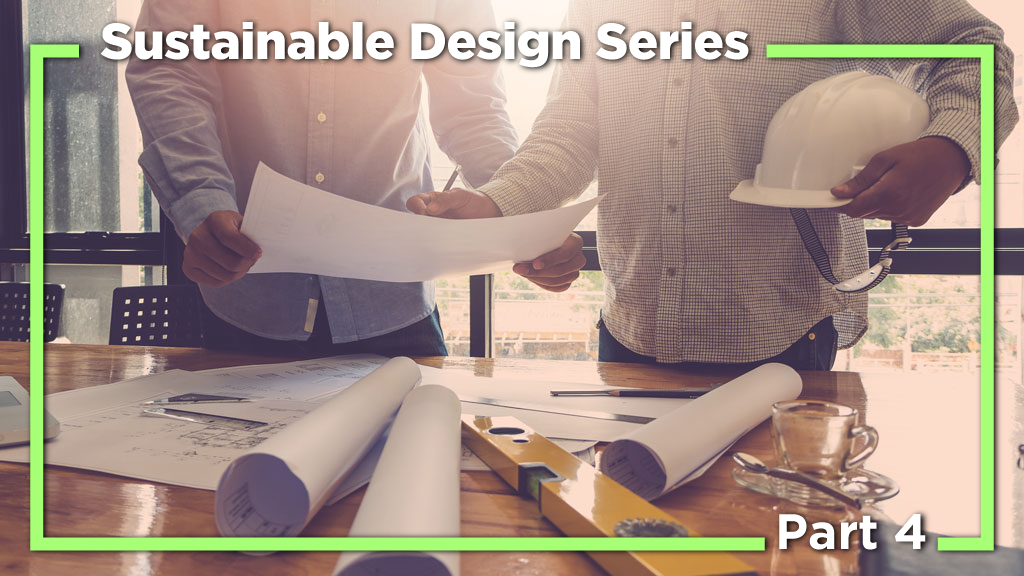
Architects are engineers are under tremendous developer pressure to work cheaper and faster, so they are not always able to finalize their design to the level of detail the client deserves.
In such circumstances, some engineers resort to copy and pasting a design from a previous job. Unimaginative, but they know the design works, and so is a low-risk approach. And to further reduce their own cost and save time, some designers rely on equipment suppliers and contractors to do some of the design work. And these vendors are not incentivized to reduce the developer’s costs, but to increase their own sales.
And when the primary architect — who in this exceptionally competitive industry may have underbid to win the job in the first place — selects specialist engineers to help complete the design (structural, HVAC, interiors, plumbing, electrical, landscape, etc.), they in turn squeeze them to cut their fees. They too must now produce their output faster and cheaper. They end up in their own silo, working pretty much independently from one another to come up with a design for their own sub-specialty. Also, to reduce costs, the basic design work is often assigned to younger less experienced, overworked and often underpaid engineers. They may be exposed and receptive to new technology but may not feel confident enough to advocate for that technology.
Then somehow, all these sub-specialty designs will have to be cobbled up together to make a cohesive working building, which may “look” nice but functions inefficiently when viewed as one integrated whole. This unfortunately does not end up giving the client (the investor) the best possible building.
These often experienced and capable design firms are not working integrated or synergistically. And they are often at odds with each other, especially on the demarcation lines of responsibility for the design and liability – in case things go wrong (and they invariably do).
They are not efficiently communicating with each other, nor are they educating the developer (who often is also not interested in change) to the extent needed to come up with an efficient and holistic design solutions that can maximize their developer’s benefit.
The developers and designers self-reinforce the “we’ve always done it this way” easy design route – the path of least design resistance – and come up with a design that they have invariably done before, and that the developer has built before. The result, more of the same, to the detriment of project tenants, society, the climate and the client as well.
Yes, this is slowly changing, and yes there are several high-profile projects where energy efficiency is an imperative, but for the majority of projects, energy efficiency rarely figures prominently when decisions are being made on which type of design to choose.
And when doing a cost-benefit analysis to decide on whether to go for a modern energy-efficient design compared with the run-of-the-mill antiquated design, the marginal additional cost in terms of more engineering hours (to come up with such a design) and potentially higher cost solutions (more expensive glazing, or more efficient heat exchanger) – both one-time costs – is allocated a far higher cost impact factor. While the future value of the recurring savings over the lifetime of the project are vastly discounted and so diluted in value. Energy efficiency never had a chance.
It is also regrettable that a very few consultants, in direct response to the price squeeze by the client, resort to structuring back-room deals with favored suppliers to that project. They see their low fee as a means to secure a project, and their real income is derived from these supplier agreements. They don’t represent the industry, but they are an issue to contend with.
Developers believe they are cutting costs and maximizing value by squeezing the consultants’ fees. But in reality, for every cent they think they are saving in consultants’ fees, developers (or their tenants) will end up paying many more dollars during the building’s lifetime.
And the inefficiency of the process of design can only create an inefficient design that will be more expensive to build than it should be, use more energy, cost more to operate & maintain and be less healthy or comfortable for its occupants. And of course, the environment suffers, and so will we.
This op-ed is the fourth in a series from Eco-Structures International’s founder and director Ghassan Nimry which focuses on innovative sustainable engineering solutions to today’s climate change problems. He believes that technology can solve many of today’s seemingly intractable problems, but to make it work we need collective work, personal acknowledgement of our role in the problem and our ability to be part of the solution. Send comments to editor@dailycommercialnews.com.
"design" - Google News
March 18, 2021 at 04:34PM
https://ift.tt/3vC5vJ8
Industry Perspectives Op-ed: We've always done design this way - constructconnect.com - Daily Commercial News
"design" - Google News
https://ift.tt/2tAY9dw
https://ift.tt/2zaSFZM
Bagikan Berita Ini

















0 Response to "Industry Perspectives Op-ed: We've always done design this way - constructconnect.com - Daily Commercial News"
Post a Comment